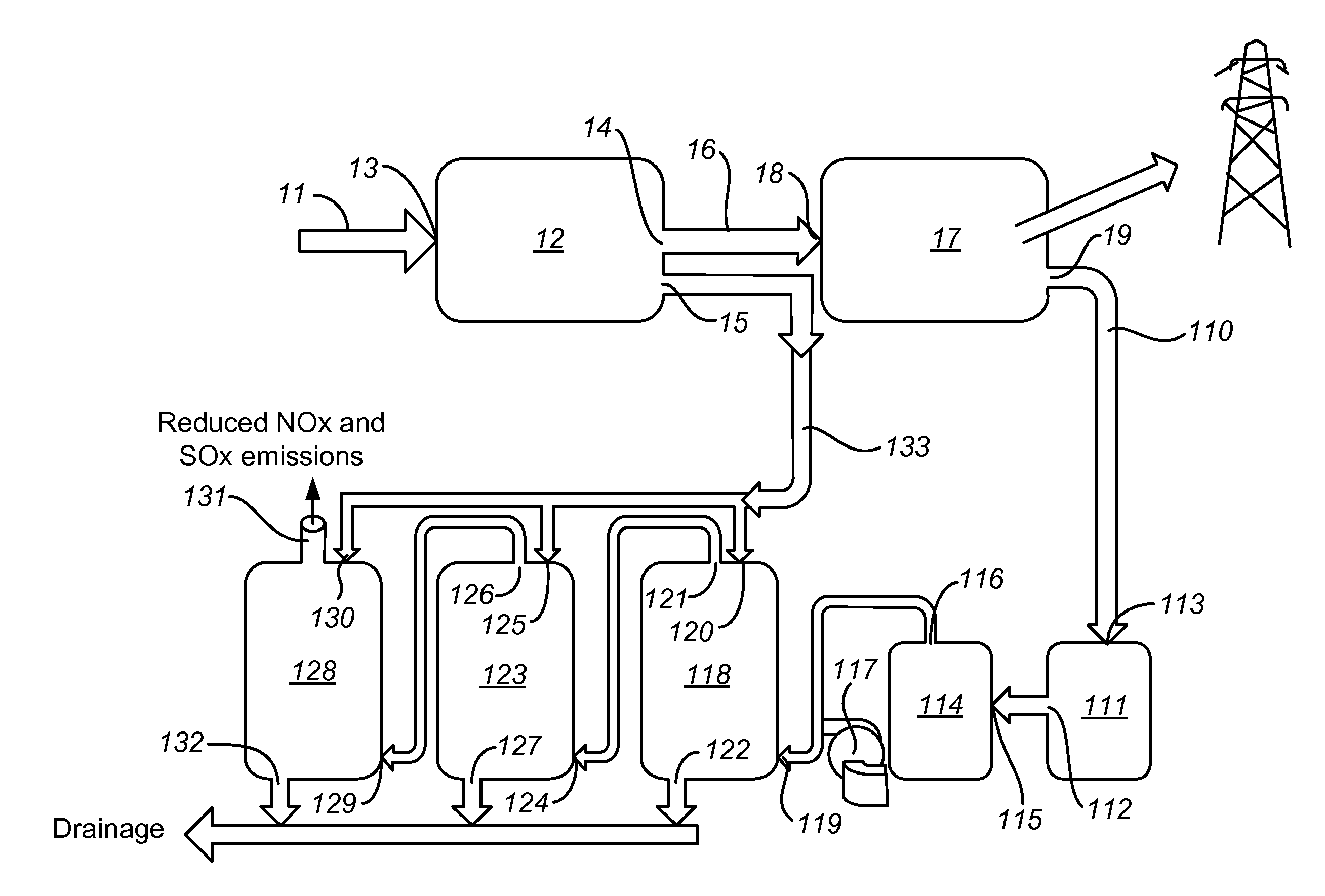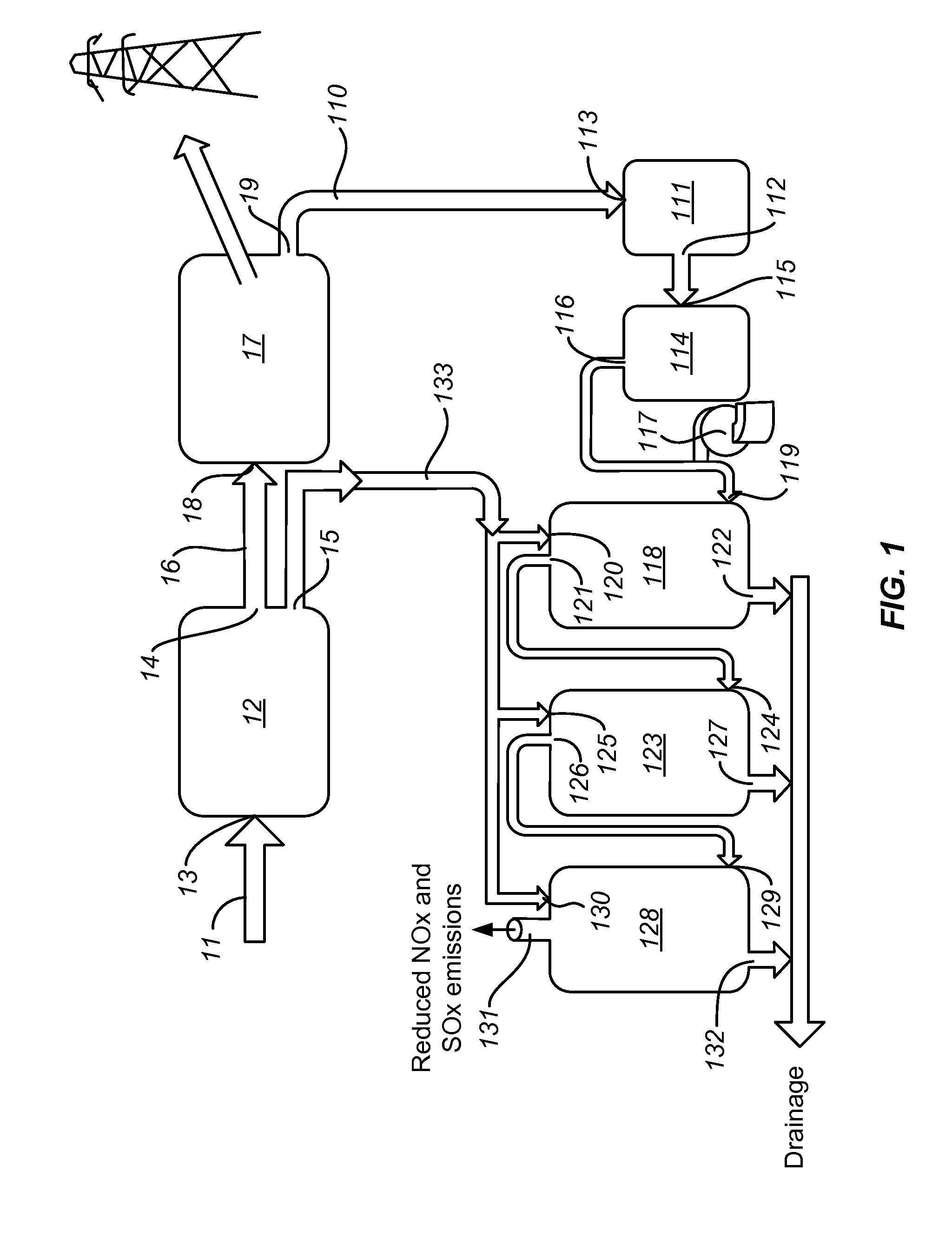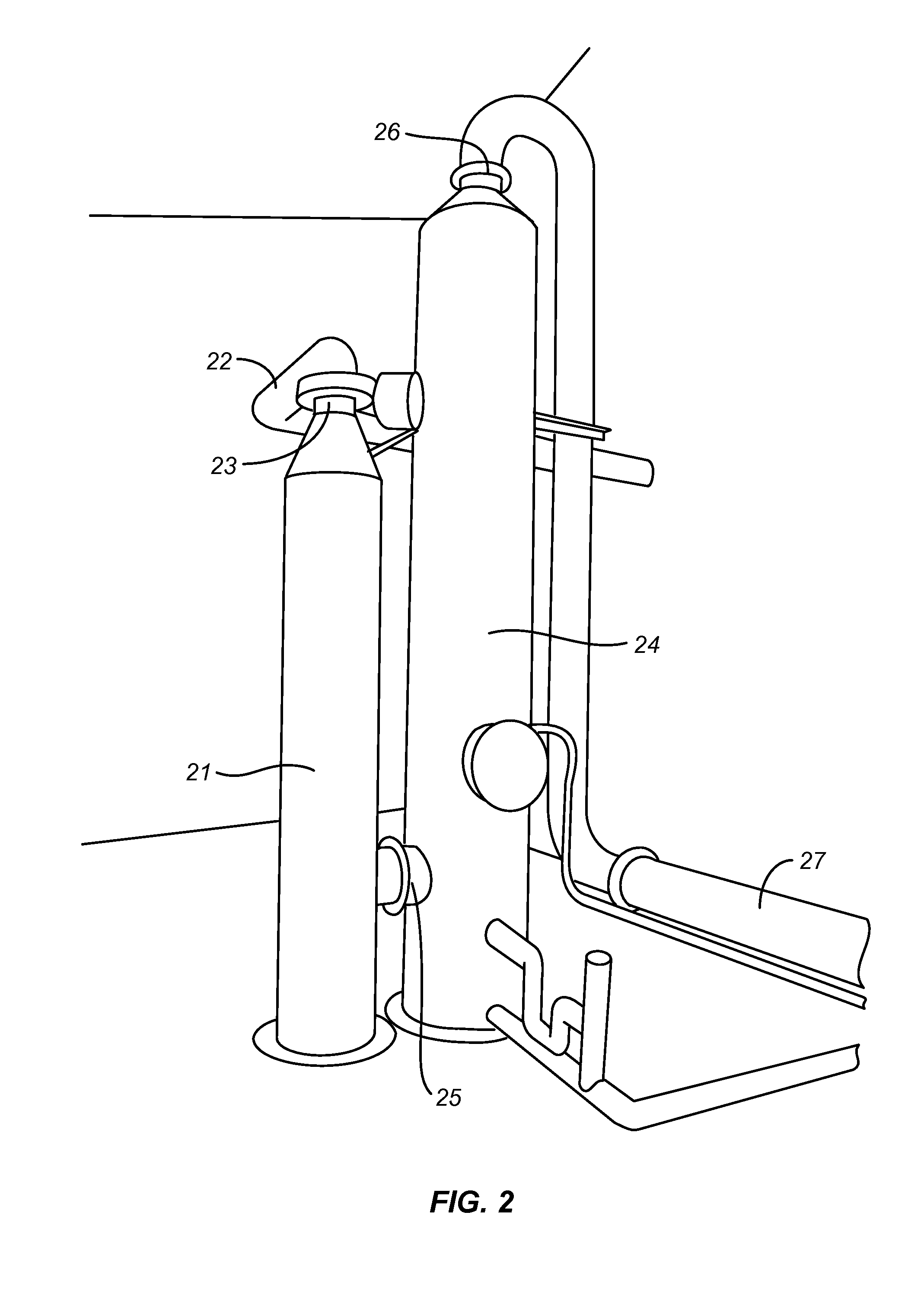Exhaust scrubber
- Summary
- Abstract
- Description
- Claims
- Application Information
AI Technical Summary
Benefits of technology
Problems solved by technology
Method used
Image
Examples
example 1
Installation of the Methods, Devices and Systems in a Dairy
[0186]In the following example, the system is installed at a dairy in California and it is demonstrated that NOx and SOx emissions are reduced in the exhaust stream of a 300 kW Guascor engine. The system is installed at a 3,500 head flushed lane California based dairy as illustrated in FIG. 11. The site is equipped with a stirred, covered lagoon type anaerobic digester (AD) of approximately 30 million gallons. An additional uncovered storage lagoon of identical size is installed adjacent to the digester and serves as a storage location for AD effluent. Effluent from this storage lagoon is pumped into wastewater tanks located at the head of each feeding lane and then used to flush the lanes back into the digester two times per day.
[0187]A biogas stream of 75-150 scfm is produced by the digester in FIG. 11. The biogas is passed through a coiled-loop chiller to condense and remove water prior to combustion. The gas has an avera...
example 2
Agents Used in the Reactor: Microbial
[0204]The absorption of NO2 into, and subsequent reaction with, water produces nitrate ions. Nitrate reducing bacteria are known anaerobes and aerobes expected to be present within vast bacterial consortium present in the anaerobic digester (AD) effluent. These microbes are capable of reducing nitrate to nitrogen gas. Examples include Thiobacillus denitrificans, Micrococcus denitrificans, Paracoccus denitrificans and Pseudomonas.
example 3
Use of Oxidant to Control Emissions from Fossil Fuel Powered Boilers and Electricity Generation Facilities
[0205]The ozone oxidation protocols provided herein are also useful in fossil fuel powered boilers and electricity generation facilities. An oxidant, such as ozone is used to convert NO to NO2 to control emissions of NOx, SOx, and particulate matter from fossil fuel powered boilers and electricity generation facilities.
PUM
| Property | Measurement | Unit |
|---|---|---|
| Energy | aaaaa | aaaaa |
Abstract
Description
Claims
Application Information
 Login to View More
Login to View More - R&D
- Intellectual Property
- Life Sciences
- Materials
- Tech Scout
- Unparalleled Data Quality
- Higher Quality Content
- 60% Fewer Hallucinations
Browse by: Latest US Patents, China's latest patents, Technical Efficacy Thesaurus, Application Domain, Technology Topic, Popular Technical Reports.
© 2025 PatSnap. All rights reserved.Legal|Privacy policy|Modern Slavery Act Transparency Statement|Sitemap|About US| Contact US: help@patsnap.com



